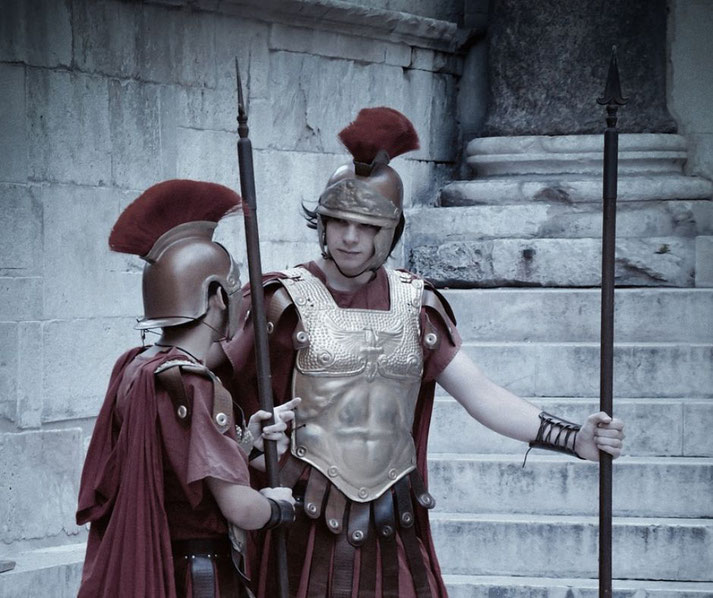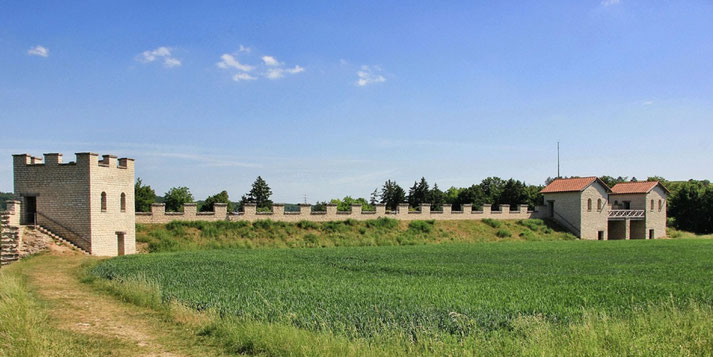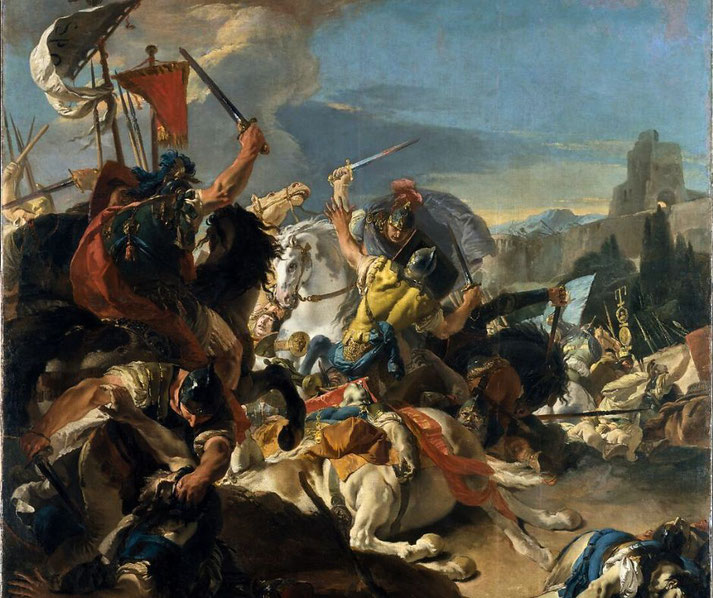A day in the life of a Roman soldier: What was it like?

Have you ever had a job that needed both fighting skills and bricklaying? Most people did not, unless they were Roman soldiers.
These human Swiss Army knives fought in Gaul by morning and fixed a broken fort by evening. Business multitasking was easy compared to the legions.
Sign up today! How to become a Roman soldier
As the Roman Empire grew, it needed a large and well-run army.
To meet this demand, a careful recruiting process was introduced to keep the legions filled with skilled men.
At first, Roman soldiers were citizens called to defend the city and its lands.
Over time, as the empire expanded, it needed a professional army on duty all the time.
In 107 BCE, Gaius Marius introduced reforms that no longer required recruits to be land-owning citizens.
Instead, it became a group of career soldiers, often from poorer backgrounds, who joined for job security and a chance to improve their lives.

Welcome to basic training
After they joined the army, recruits entered a world of hard training and strict discipline.
Training not only built fitness but also taught the soldier's mindset.
Recruits learned to use the weapons like the gladius and pilum accurately, but at the same time, they learned loyalty and discipline.
During training, they spent hours practicing formations, mock battles and long marches, all which were designed to continually refine their abilities.
Every day, their training ground rang with the echoes of weapon strikes and centurions’ yelled commands made sure everyone knew their role and could follow orders quickly.
Becoming part of the team
Aside from physical training, the goal of training was to build strong friendships among soldiers.
This is because Roman military strength came from both its tactics and equipment, and from turning many men into a single cohesive group of warriors.
Because of this, men lived in the same tents, ate together and were taught to watch each other's backs in battle.
Training built these friendships and real-world combat tested them. As a result, the bond between the men created a sense that they were ‘brothers in arms’.
Your daily routine
A soldier's life followed a clear daily plan. At dawn, a horn call woke the soldiers and summoned them to the first task: the morning muster.
Here soldiers lined up in neat rows, ready for inspection.
This check made sure every soldier was present and ready for battle, since any mistake or delay in preparation could cost lives when time was of the essence.
After this muster, soldiers did thorough training exercises. Even long-serving veteran soldiers were required to join in with these drills.
After a morning of hard work on the drill grounds, soldiers ate their main meal, which was often a thick stew with bread and sour wine.
Later in the day, they did lighter tasks, like guard duty or camp repairs.
Then, when evening came, they ate one more meal again and offered prayers to the gods.
Finally, it was time that they could rest in their tents.
Not just fighting... Here are the jobs you might do
Many people assume that Roman soldiers spent most of their time fighting the enemies of Rome on the battlefield.
However, battles were very rare events. Most of the time, the daily routine we covered above was what the men experienced over and over again.
But, there were a series of other routines that soldiers were expected to follow, which broke up the monotony somewhat.
One of the primary duties of a legionary was to stand guard. Whether posted at the tall gates of a fort, along Hadrian's Wall, or at a commanding officer's tent, standing watch over your fellow soldiers was an incredibly important task.
Their job was to scan the horizon and observe visitors coming in and going out of the camp, all the while, keeping an eye out for any threats.
When on night watch duty, those wanting to pass through the camp's gates required a pre-determined password.
When it was spoke to the soldier on guard, they could trust that the person was a friend, not an enemy.
It was the responsibility of the tesserarius, the officer in charge of the watchword, to make sure this system kept the camp safe.
Outside the camp, soldiers could often be sent on patrols.
On these patrols, soldiers would walk through local communities or rural areas, gathering information, spotting possible dangers, and, overall, trying to keep Roman lands safe.
Across the empire, these patrols acted as Rome’s eyes and ears.
Also, soldiers did more than fight or defend: they also worked as builders.
They built roads that linked the empire, forts that marked borders, and bridges over rivers.
In fact, the Roman roads they created were designed to be straight and strong so that soldiers could march quickly to locations were battles were to take place.
Your home away from home: Life in a Roman fort
The castrum, or Roman fort, was home for legionaries. These forts appeared across the empire and operated as defence points in new or border areas.
Each of these forts followed a clear standard plan. Main streets like the Via Praetoria ran from the main gate to the Principia, the headquarters.
Inside the Principia were the legion’s flags, as well as the shrine for daily offerings, and the commanders’ offices.
Next to it were the horrea, or granaries, which stored food to keep soldiers fed.
There was also the barracks, where soldiers lived in groups of eight per tent, in what was called a contubernia.
In addition to living quarters, forts also held workshops, bathhouses, and sometimes small theatres.
Interestingly, traders, craftspeople, and families could also live in or near the camp life. This made the fort feel like a busy town.

The harsh punishments when you broke the rules...
Soldiers faced a clear code of conduct and severe punishments for breaking rules.
It was thought that discipline kept the legions running smoothly. So, when soldiers failed to follow the rules, the consequences handed out seem very harsh by modern standards.
For small offences, like failing to maintain equipment or arriving late for duty, a man could be issued with a fine or have some of their daily food rations reduced.
However, for serious crimes, such as theft, disobeying orders, or desertion, they could be flogged. This was in front of other soldiers.
The victim would be tied to a post and struck with a leather whip, or flagrum, which sometimes had small, sharp metal shards embedded in it.
The scars of the wounds caused by this brutal instrument would stay with them for life.
The worst punishments was decimation. This was handed out when units showed cowardice during a battle or mutinied from their commanders.
When it was handed out, the general would pick every tenth man by random lot to be beaten to death by his comrades.
The chance of being chosen as a victim spread fear among all of the men, but it was meant to ensure that everyone shared the blame for their failure.
The importance of religion and superstitions
Religion and superstition played a surprisingly important role in the life of a Roman soldier.
There were a lot of gods in the Roman pantheon, since they had a god for almost every aspect of life. The military was no exception.
Mars, the god of war, was honoured with strong support among the legions. He was the protector of soldiers and they asked for his favour before the start of new campaigns and during battles.
As a result, temples to Mars appeared across the empire. Within the boundaries of the camp, soldiers often built altars in his name.
However, the legions included men from many regions, a diversity that created a mix of religious beliefs and practices.
As such, gods from conquered lands, such as the Persian god Mithras, gained followers among the troops as well.
In fact, the cult of Mithras, with its focus on bravery and friendship, fit in well with lower-ranked soldiers, and it became it very popular.
On top of this, superstition was also very common in the military mind. Most of the time, it meant that dreams and natural events could often be interpreted as omens or signs from the gods.
Under times of increased stressed, simple signs could influence commanders’ decisions and affect troop morale.
For example, the flight of birds, the behaviour of animals, or an unusual event before battle could be seen as signs of either victory or defeat.
In addition, one of the most respected symbols in the Roman army was the eagle, or aquila. Each legion had its own aquila: a golden eagle on a standard.
It stood for the legion's honour and pride, and it was believed to protect the unit.
As a result, losing this standard to the enemy was a serious failure, which would result in ongoing shame.
What to expect on the day of battle...
At dawn on the day of a battle, the camp was busy as soldiers put on their armour and carefully checked their weapons.
The weight of the lorica segmentata, the sound of metal, and the firm grip of the scutum shield were clear reminders of the coming fight.
As the men formed their lines on the field, sharp commands from centurions and the whispered prayers of soldiers who asked the gods for help would be a very common experience.
Often, generals and tribunes spoke to their troops to deliver stirring speeches, hoping that it would boost morale by reminding them of their duty to Rome.
These speeches could mentioned past victories and the honour of Rome.
Then, when the battle formations were set, the legionaries were in tight ranks and the auxiliary cavalry in their places, the fight could begin.
The two forces would normally approach each other, then, with the first hurled pilum, the battle began fully.
The bonds made in camp and on marches became their lifeline. If they did their duty and trusted their training, then victory would usually be theirs.

How did people leave the Roman army?
Leaving the army, like joining it, followed rules set by tradition and imperial needs.
Late in the imperial period, legionaries served about 25 years, though wars or shortages could extend this time.
Upon completion of their service, they received an honourable discharge called missio honesta. Now, they could return to civilian life.
Those who were non-citizen soldiers got a bronze diploma confirming their service and finally granting them Roman citizenship.
Retiring citizen soldiers often received a plot of land, usually in newly conquered areas.
This was a kind of pension and placed loyal veterans in regions that needed stability.
However, some soldiers left before the full length of their service if they had suffered injuries or illness. In a sense, they received a medical discharge.
Life after service was not easy. Some used their skills and contacts to start a farm or get into trading goods; others struggled with the ongoing physical and mental scars of war.
What do you need help with?
Download ready-to-use digital learning resources
Copyright © History Skills 2014-2025.
Contact via email
With the exception of links to external sites, some historical sources and extracts from specific publications, all content on this website is copyrighted by History Skills. This content may not be copied, republished or redistributed without written permission from the website creator. Please use the Contact page to obtain relevant permission.





